The purpose of this research was to establish a micro-agricultural networking system – a new extension of the traditional urban agriculture in the Tenderloin District of San Francisco, for which mapping and design of the prototypes of apparatus for the new system were provided. One of the aims of this thesis was to design new applications for urban agriculture as small-scale spaces in cities without affecting the original properties of the land use. Precedent mapping, metrics of green spaces, and municipal codes were provided to identify appropriate spaces for micro-agriculture. Networking systems that enable the combined implementation of several micro-agriculture types were established. The importance of micro-agriculture applications to local food diversity and availability, farm-to-restaurant networking systems, and the enjoyment of social participation are discussed in a contextual framework.
Vegetable Desert in Metropolis
San Francisco is a leader in fresh, healthful, sustainable food. However, the Tenderloin District is underserved in the amount and diversity of produce. The Tenderloin District, a neighborhood in downtown San Francisco, California, encompasses about fifty square blocks. There are over 30,000 residents, sixteen grocery stores , and two community gardens, but no supermarket there. The US 2010 population census in the Tenderloin District was 31,565 residents. According to GIS data (City and County of San Francisco 2012), the population is very dense in the blocks including Turk Street, Eddy Street, Ellis Street, Hyde Street, Leavenworth Street, and Jones Street, where each block has 700-1700 people.
The US Department of Agriculture recommended average intake of vegetables and fruits should be five or more ½ -cup servings per day per person. Americans need to consume more fruits and vegetables, especially dark green and orange vegetables, and legumes (Guenther, et.al. 2006).
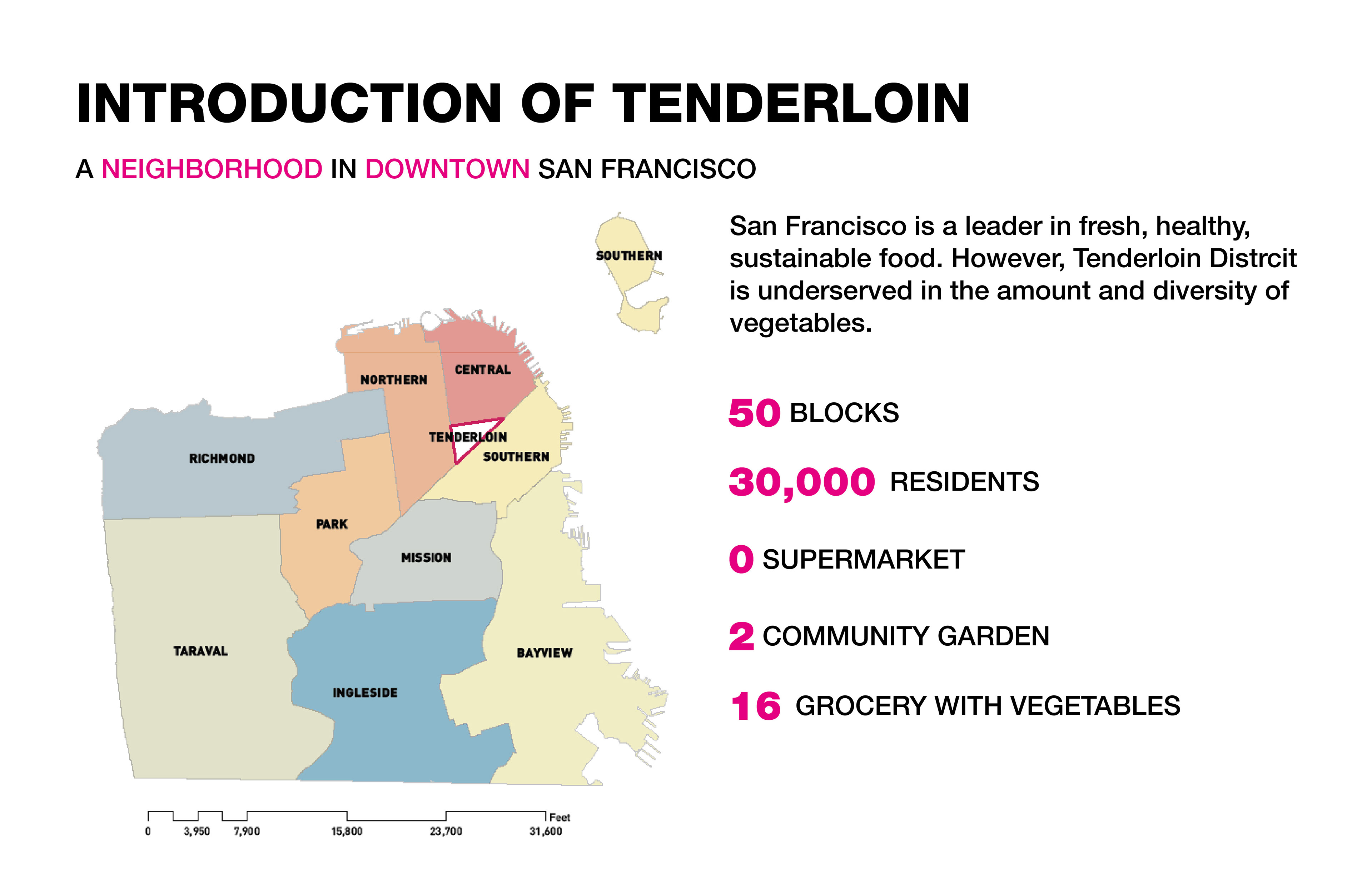
Data Analysis
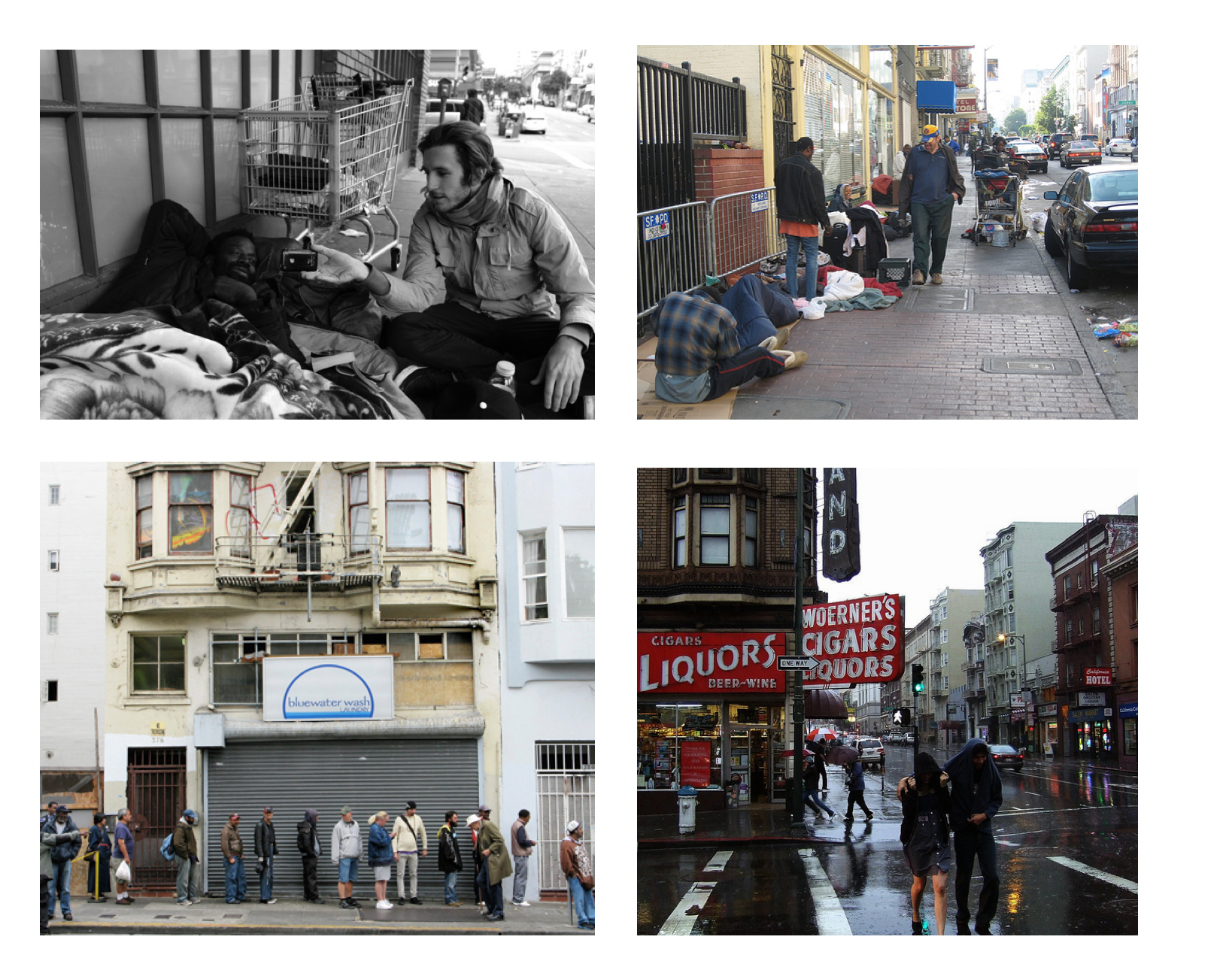
Site Investigation
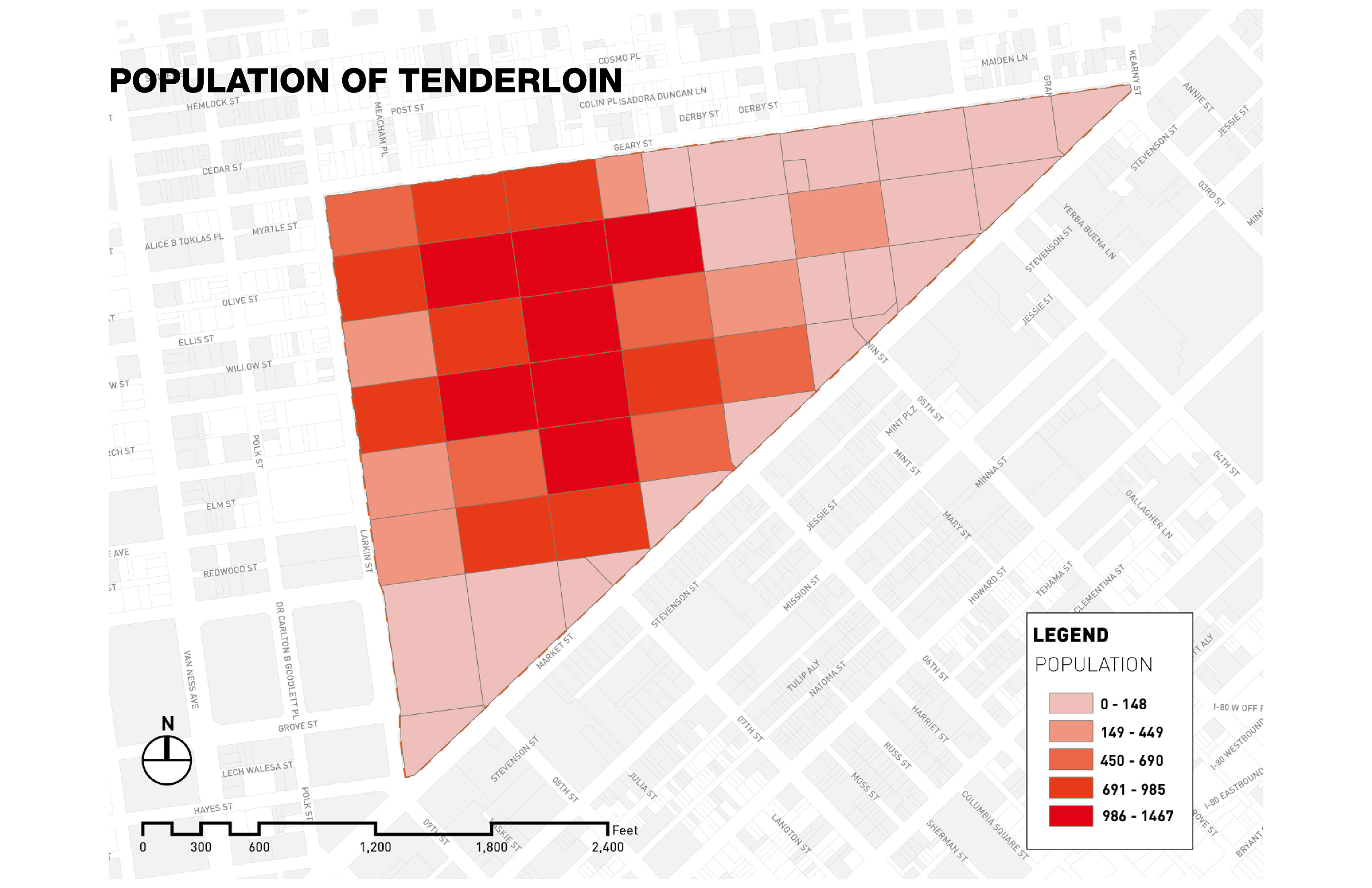


Limit of Traditional Urban Farm
Before coming up with the idea of micro-agriculture, I attempted to find spaces of urban farm by using GIS Mapping and looking up the Urban Zoning Code. However, it turned out to be unavailable.
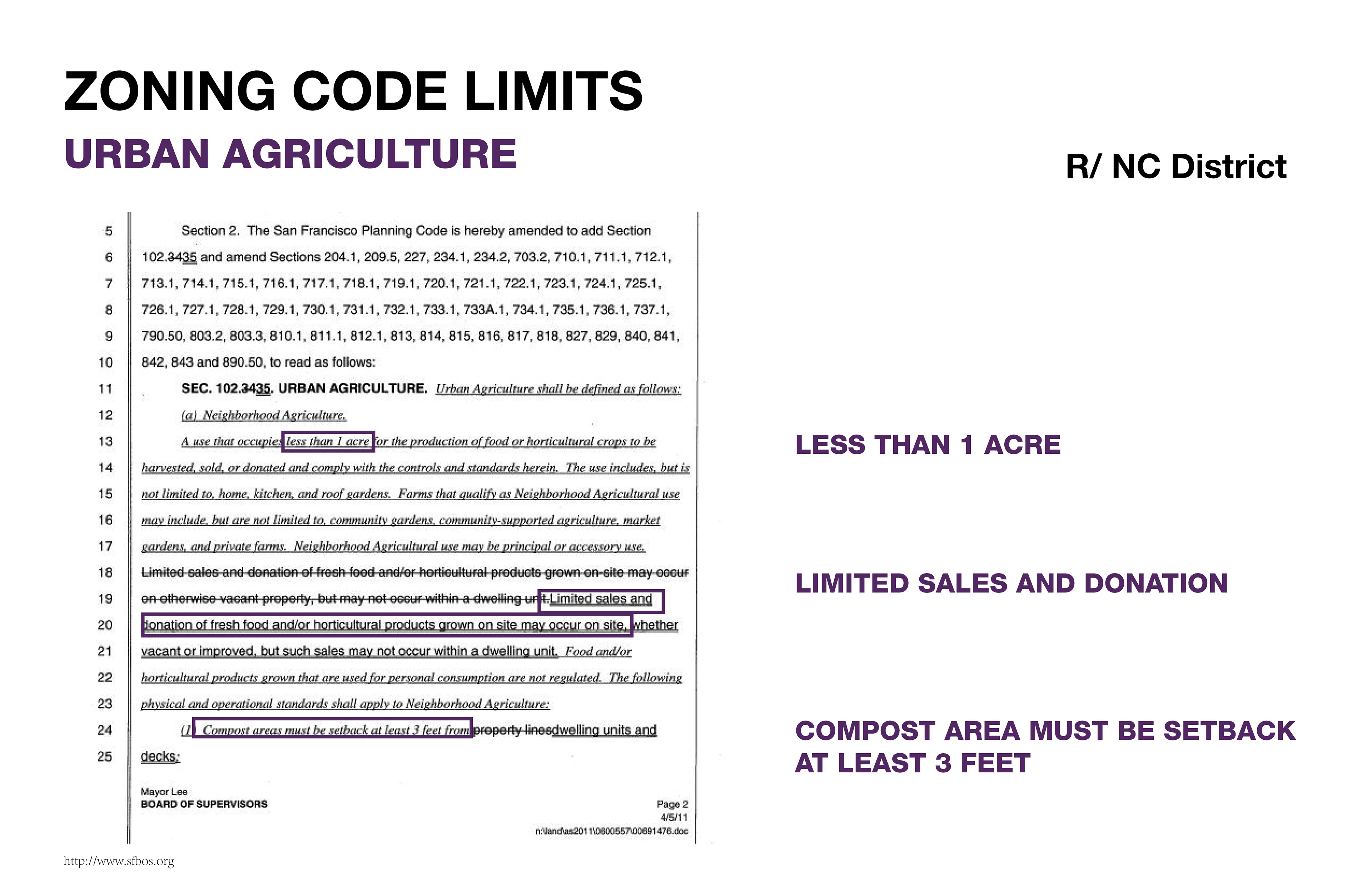
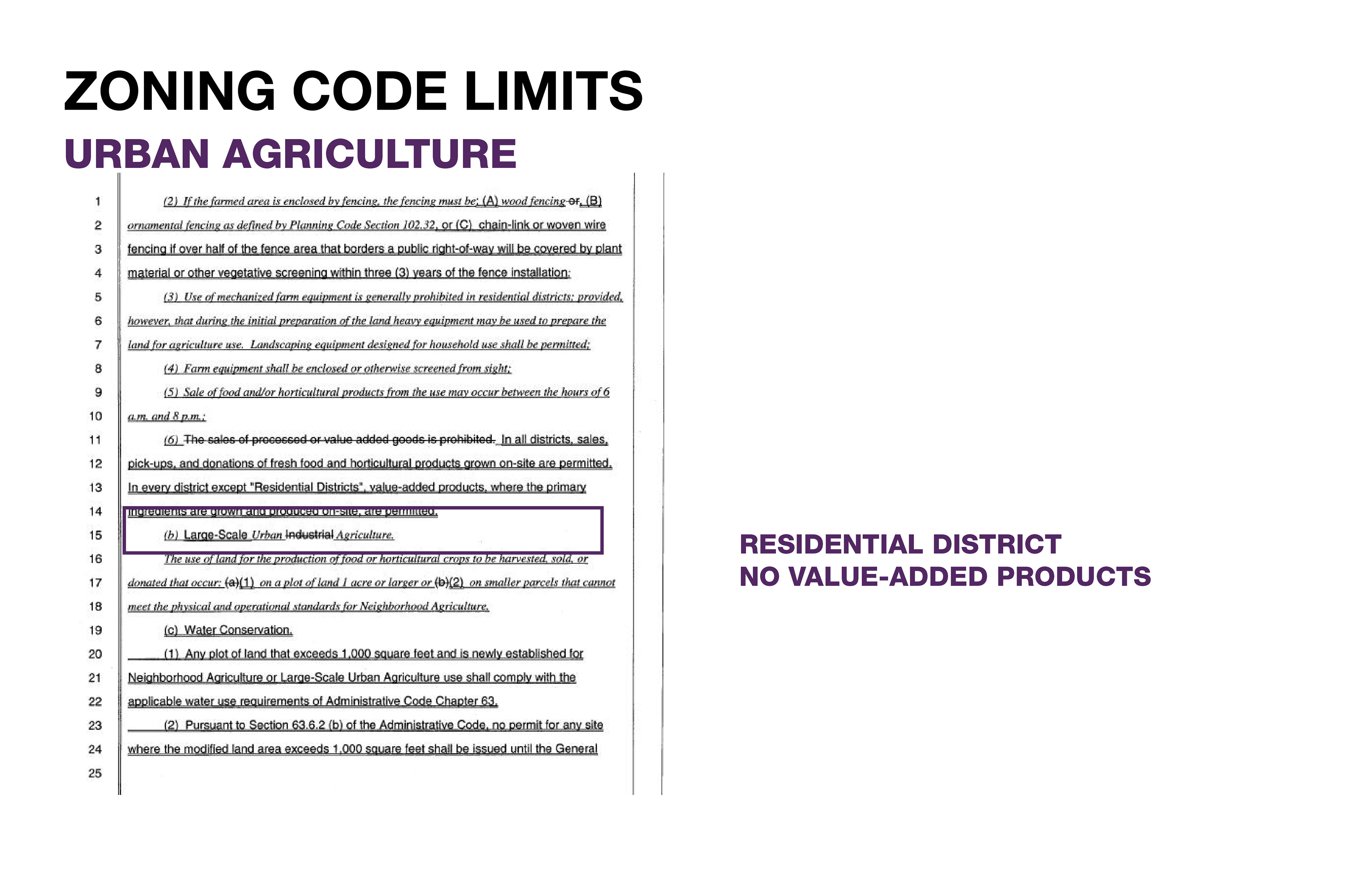
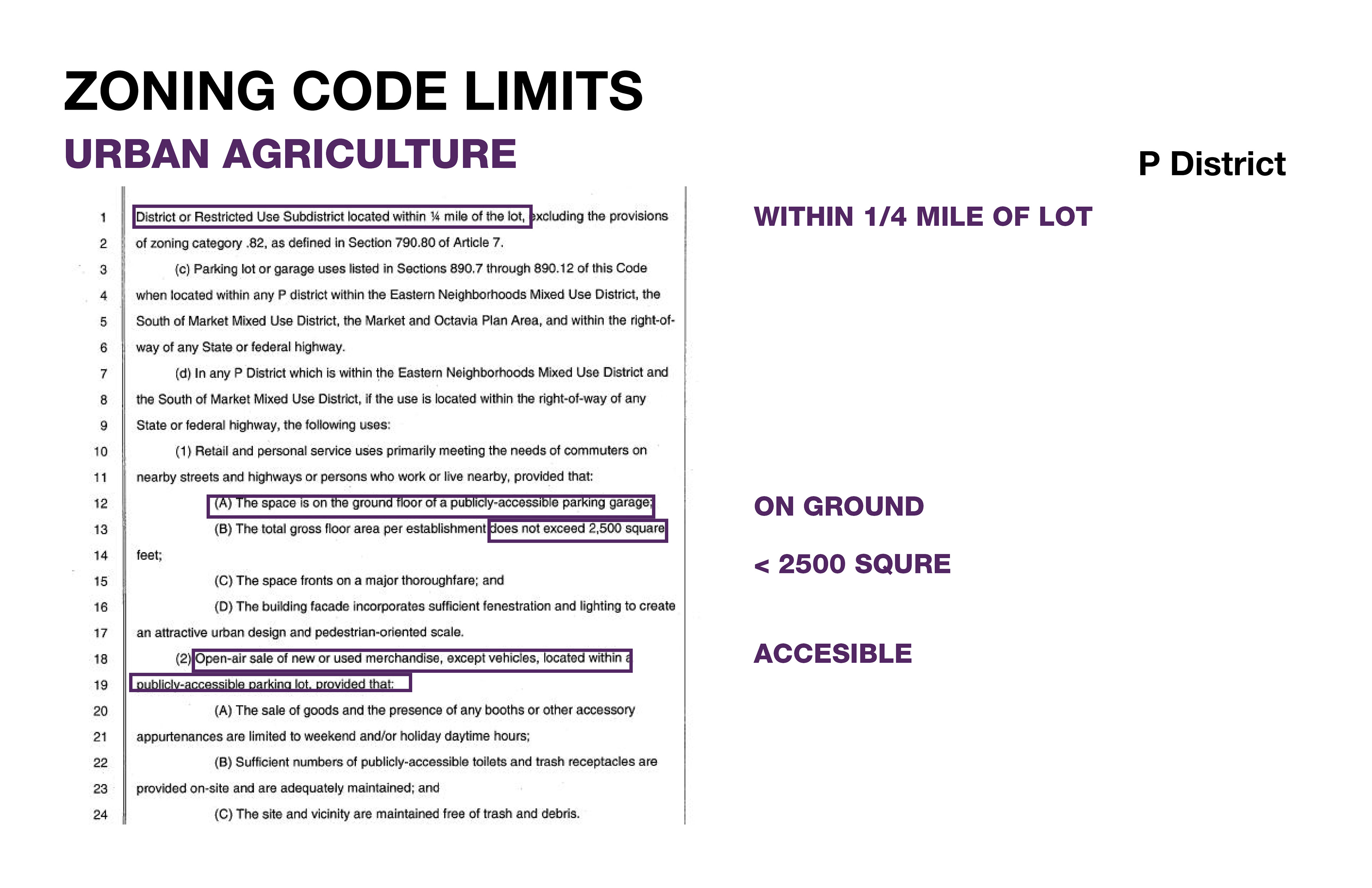
Why Micro-Agriculture?
Comparing traditional urban agriculture’s pros and cons with micro-agriculture’s, the advantages of micro-agriculture are obvious. Traditional urban agriculture can improve local food access and urban food diversity. However, traditional urban agriculture is less advantageous than micro-agriculture in terms of property values, prohibited uses, and the unstable capital investment and market revenue.
Micro-agriculture is a new expansion of traditional urban agriculture. It consists of new applications of urban farming in small-scaled places and spaces somewhere in cities without affecting the original properties of land use. There are advantages of micro-agriculture, including the economization of urban spaces, the enjoyment of social participation, landscaping public spaces, enrichment of local food diversity, and improvement of local food access for under-served communities.
Ideation
There should be an urban ecosystem framework for the effective application of the micro-agriculture. Through brainstorming and divergent thinking, I assumed two frameworks to support micro-agriculture. One is to imply a financing method called "tax increment financing (TIF) as business model, the other is to refer to communication system as our food distribution network.
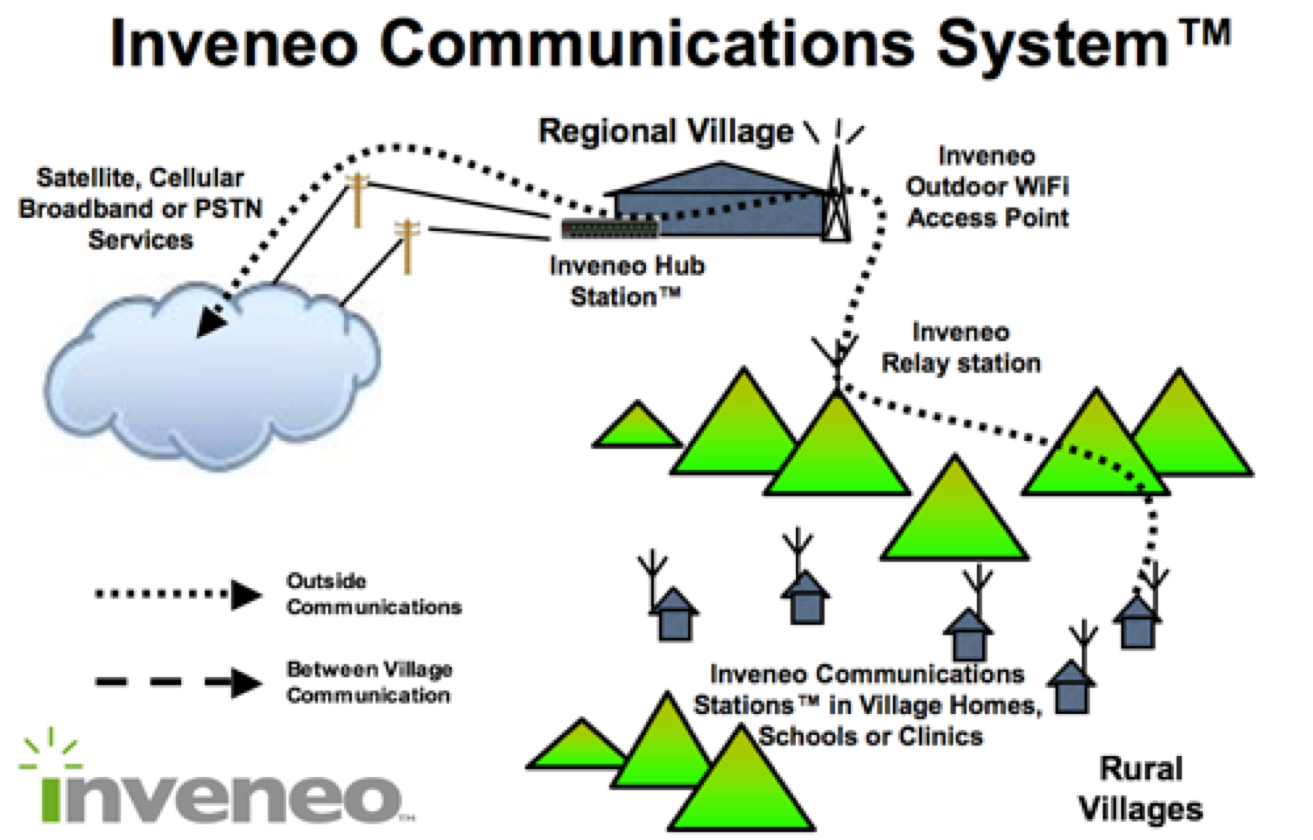
Distribution Model
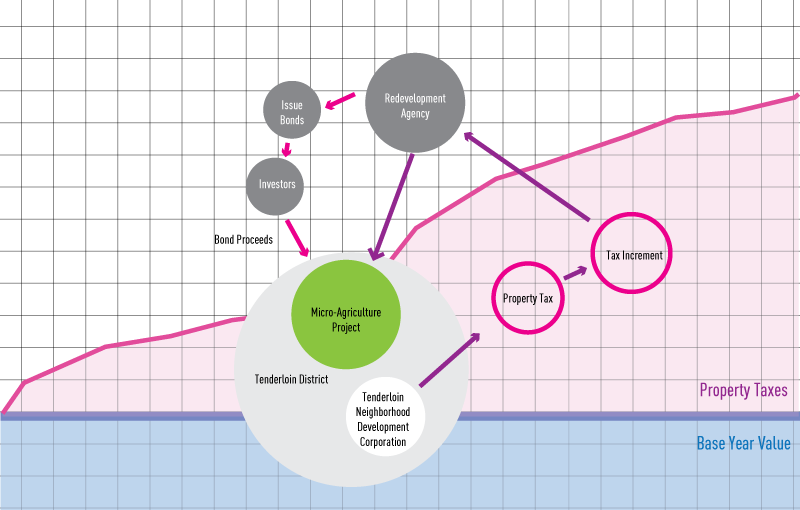
Business Model
Framework
The proposed framework of micro-agriculture can be applied to two different realms: public and private.
Public Mode
In the public mode, the city government will authorize the neighborhood development institute to set up the Micro-Agriculture Project and also allocate funds to the project. People living in the neighborhood will pay more taxes and can enjoy the new kinds of vegetables from the installation. In this mode, the public organization plays a very important role in micro-agricultural projects. Once the project starts, the neighborhood development institute will be in charge of raising money for the construction, recruiting workers and overseeing the process of building the project. The public micro-agricultural project will operate with funding from the government.
The advantage of the public mode is that the project can function as a small-scale community garden system which can improve the residents’ participation and the vitality of the neighborhood. Based on the existing employment ratio and construction of the Tenderloin District, the Tenderloin Neighborhood Development Corporation (TNDC) can make flexible adjustments on the project’s construction and labor needs. The TNDC can arrange the location of the micro-agriculture application with reference to zoning limits, parking demand, safety needs, and other conditions of the district.
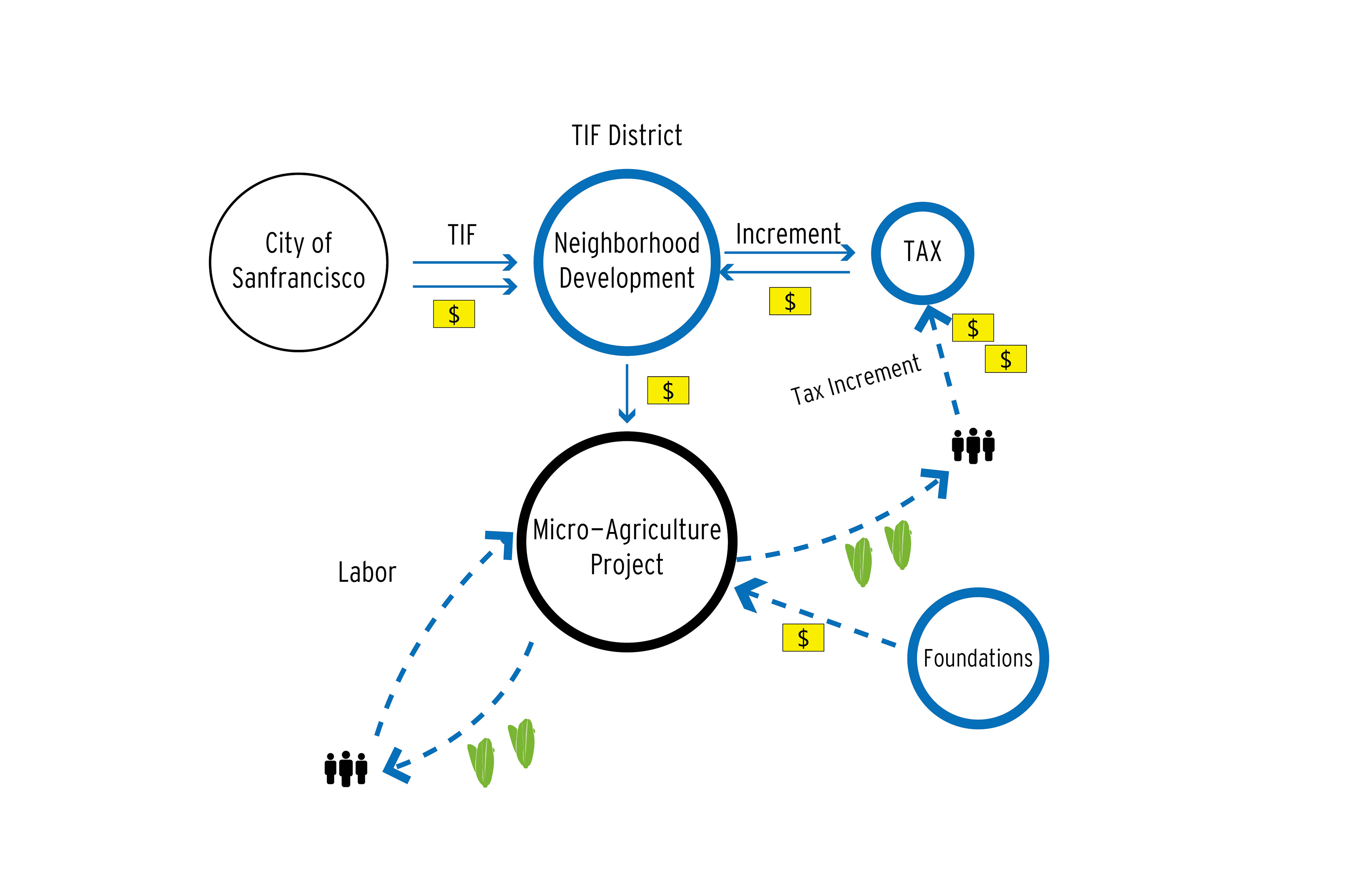
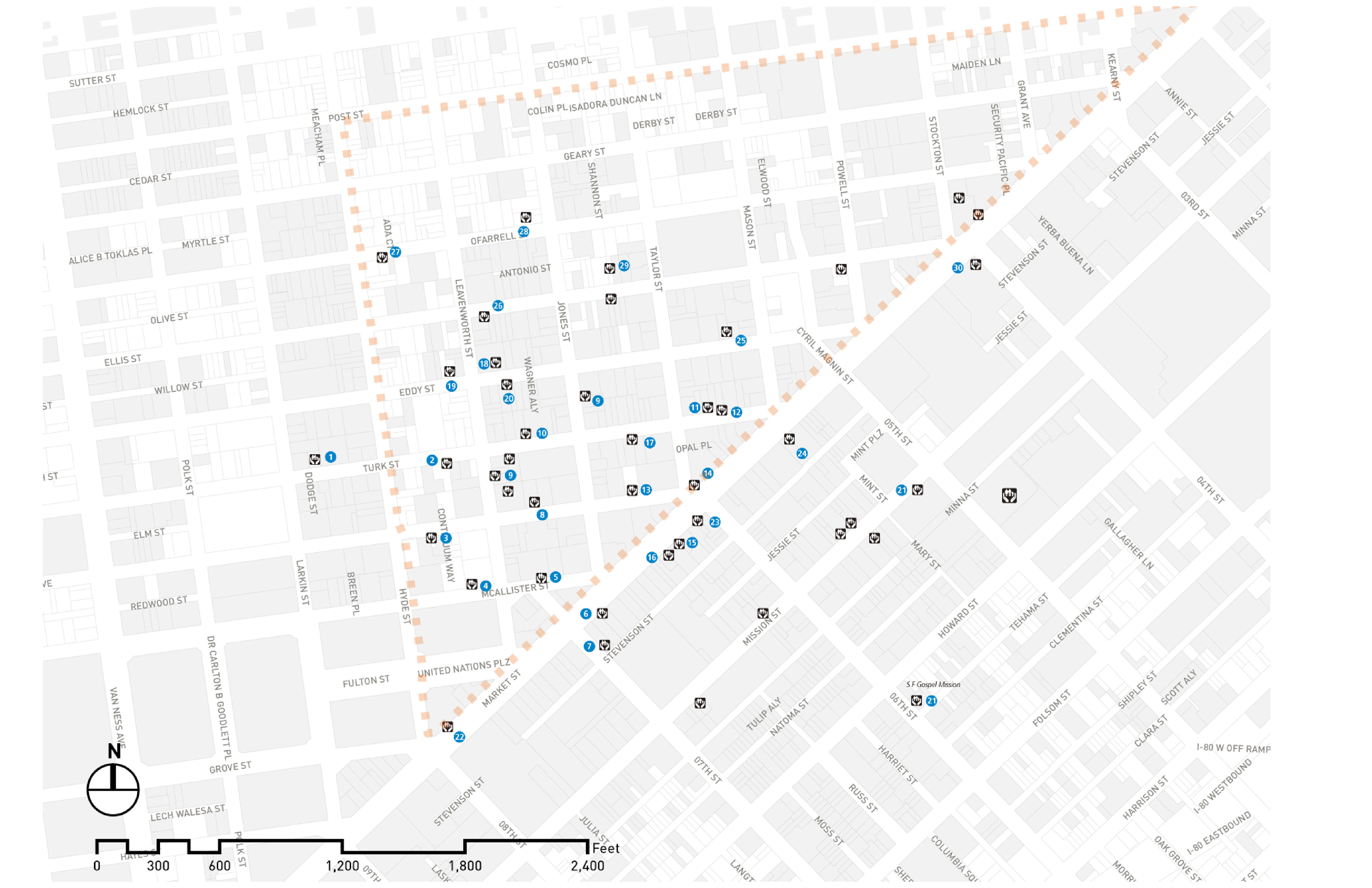
GIS Mapping
Private Mode
In the private mode , the vegetarian restaurant will invest in the installation of the micro-agriculture system after governmental approval. The revenue made from the project will go back to the restaurant. In this mode, the operation of the projects largely depends on the condition of the vegetable and restaurant markets. The restaurant in charge of the micro-agricultural project can harvest the vegetable products from the project and directly use them in food service. Based on ingredients needed for its recipes, the restaurant can design and improve the micro-agricultural applications itself. The kinds of the vegetables grown will be determined by the private restaurant.
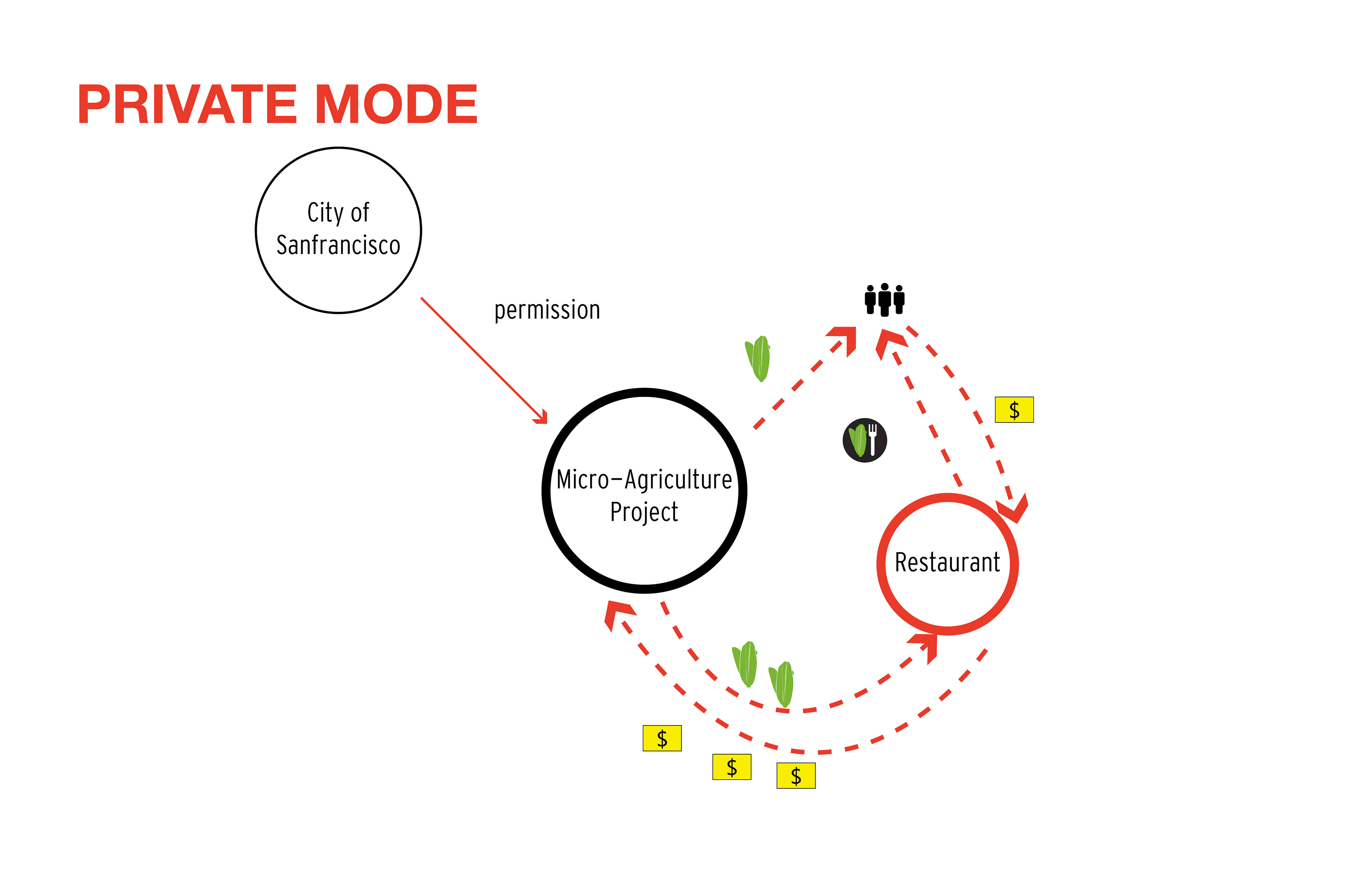
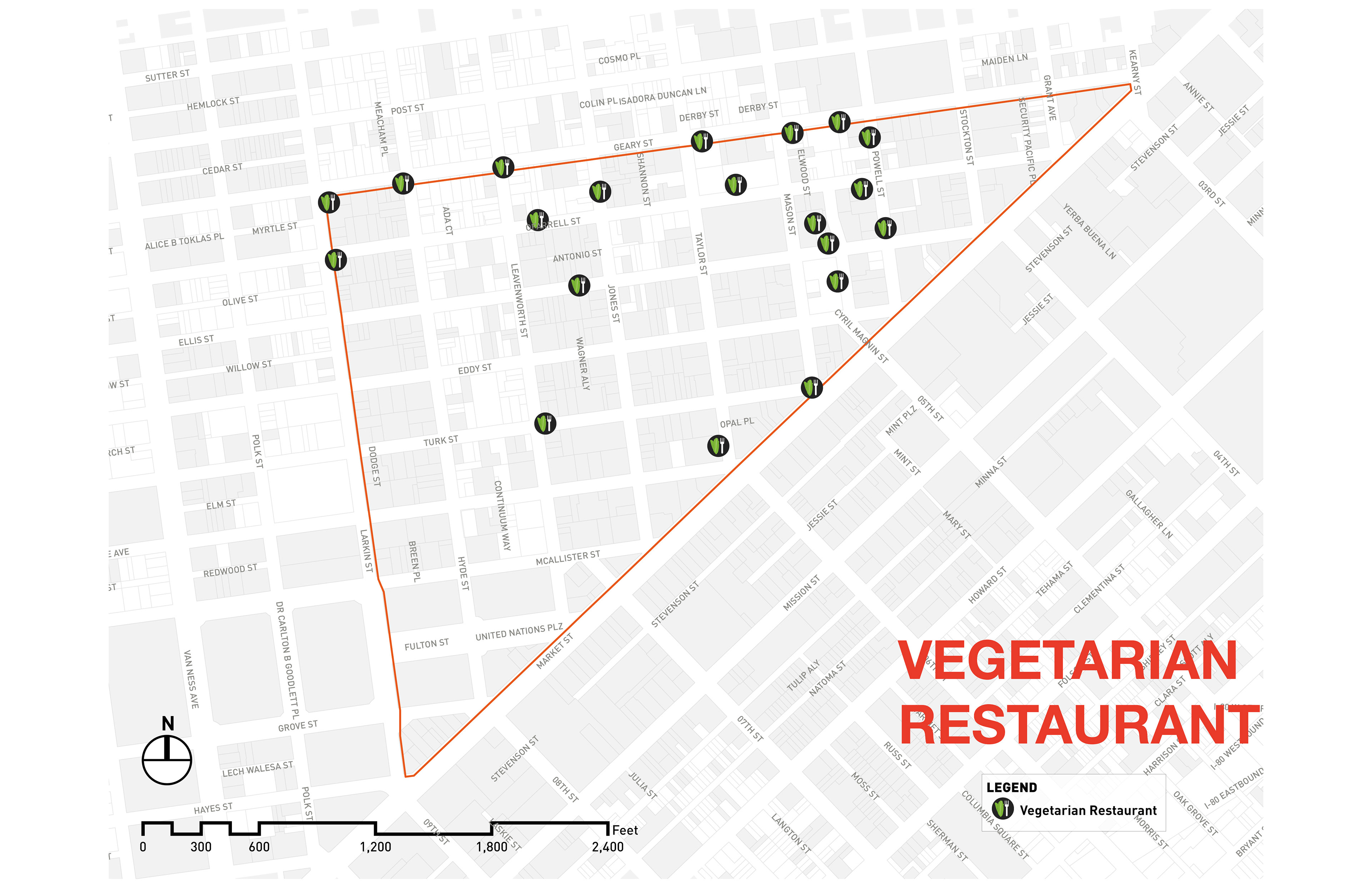
GIS Mapping
Integral Mode
The research deploys a matrix that includes the financing framework, site selection, and the tectonics of the apparatus to better bridge relationships among all the important factors related to the Micro-agriculture Program.
Prototype

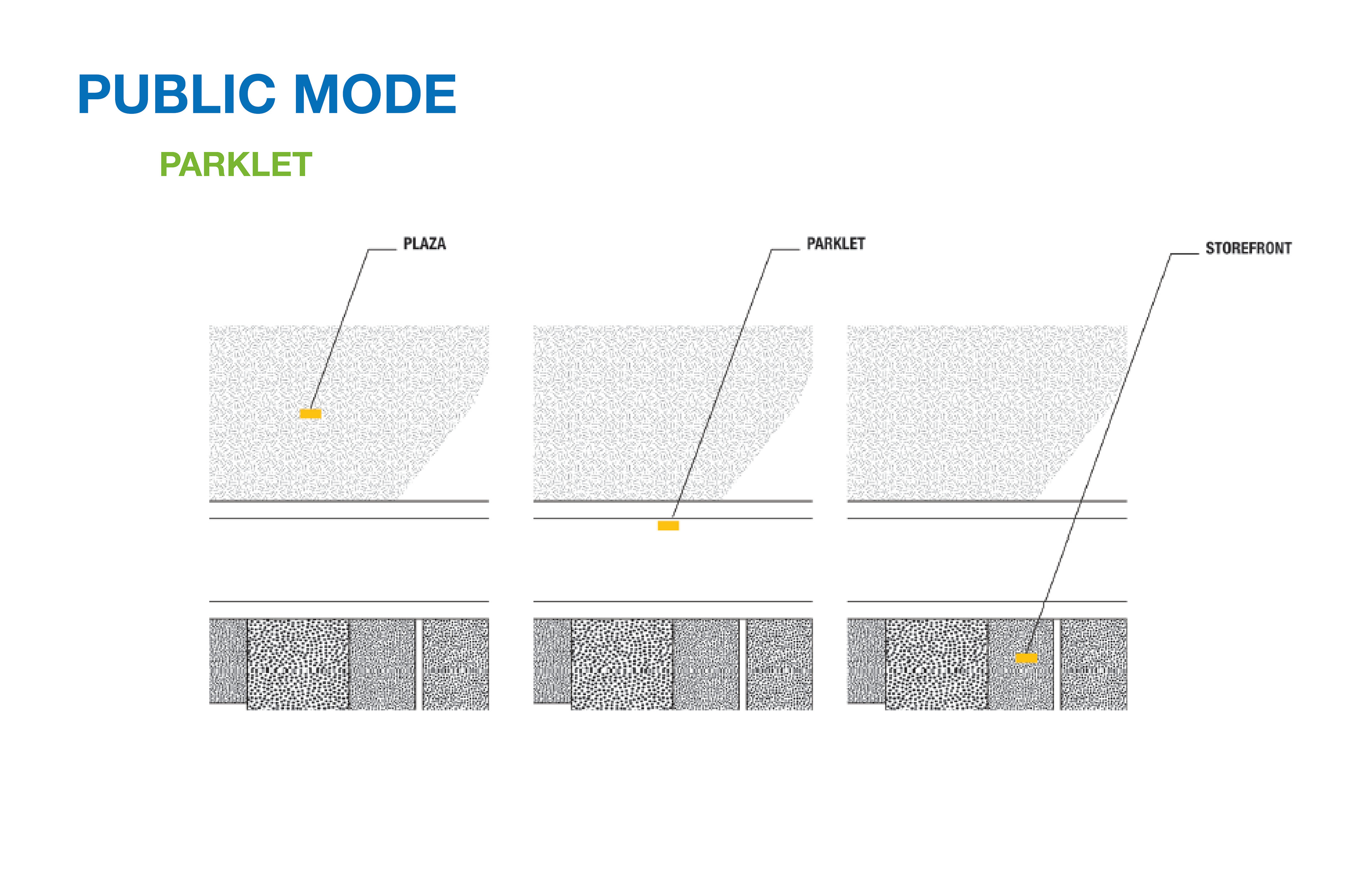
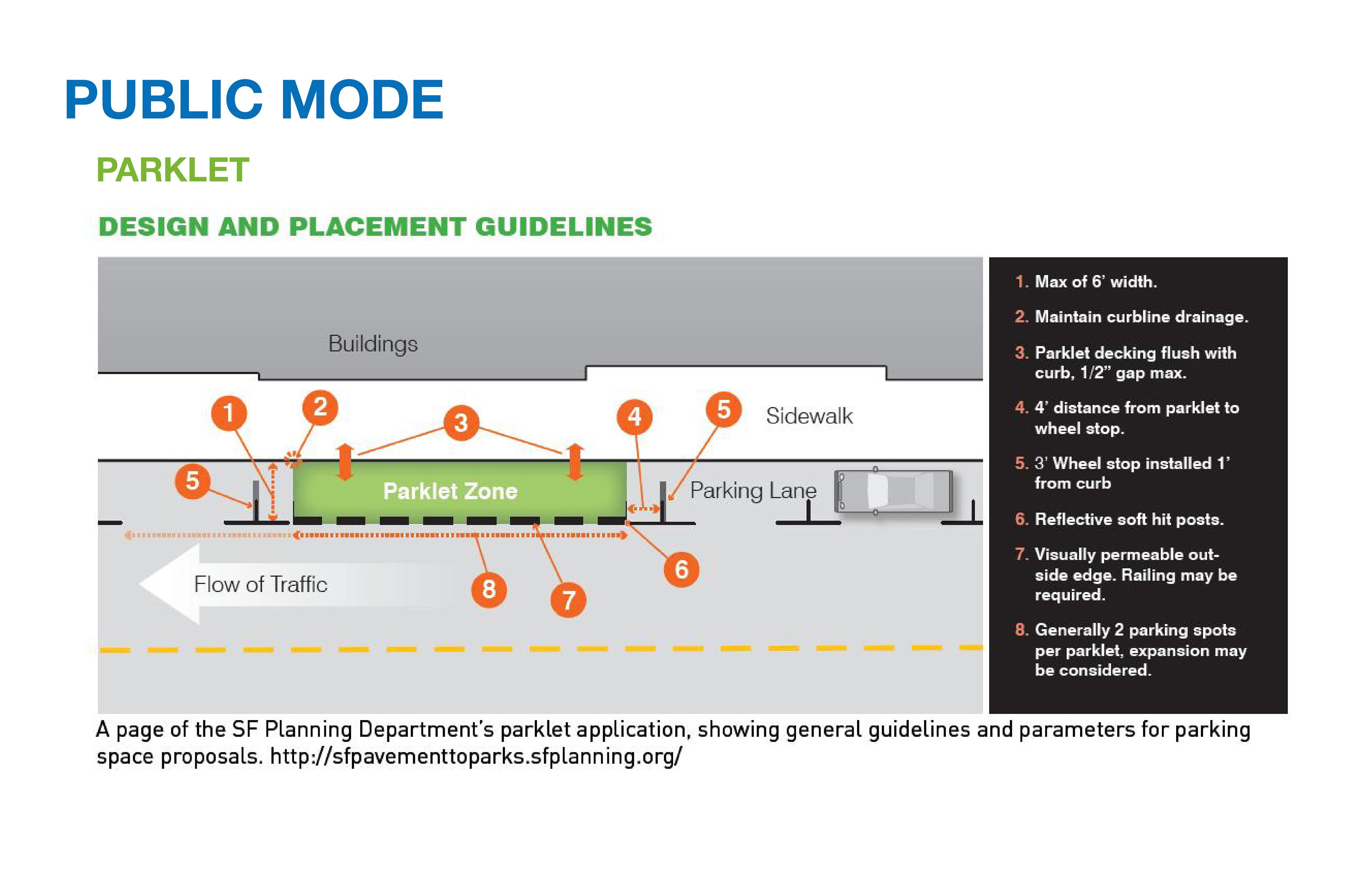
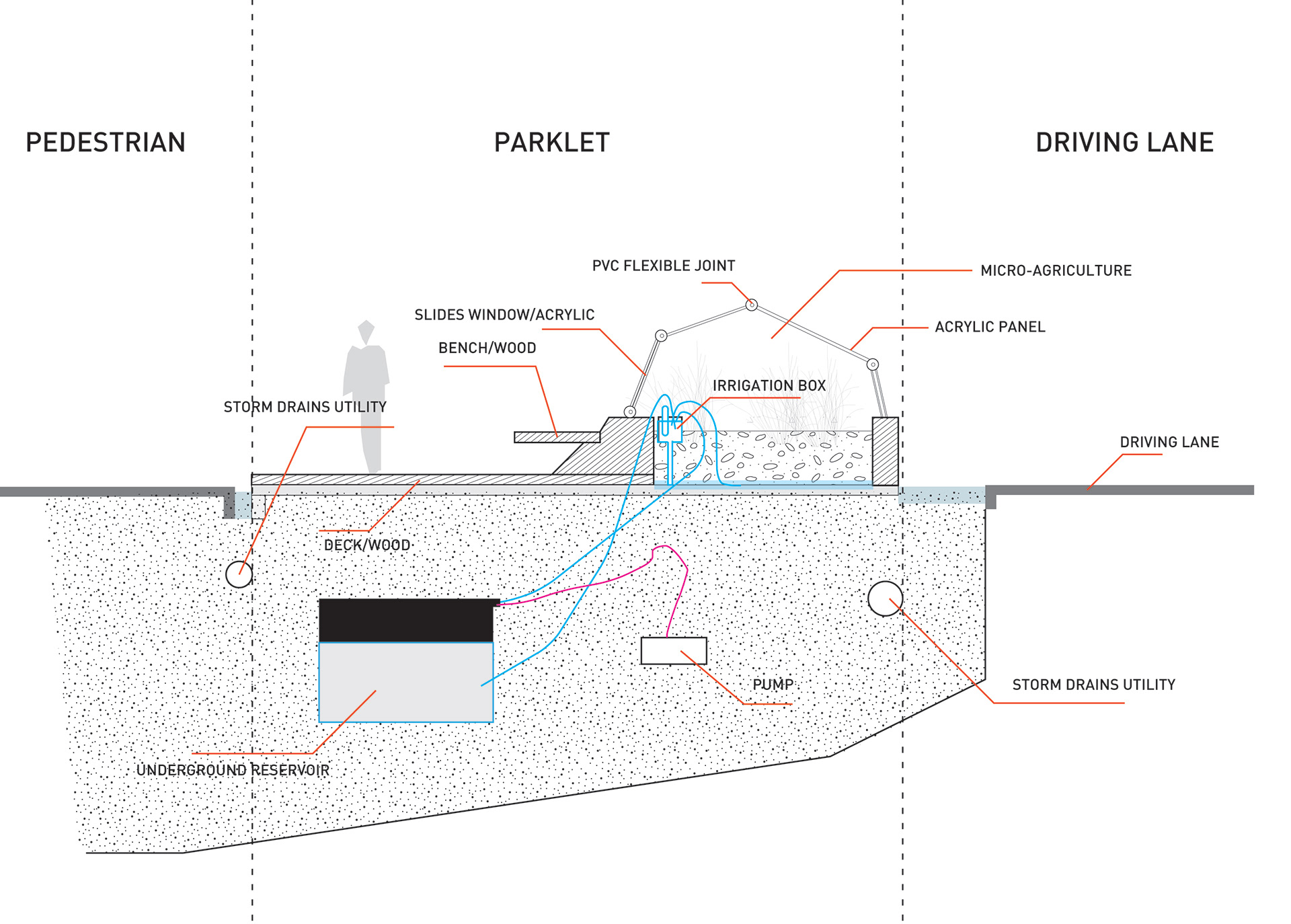



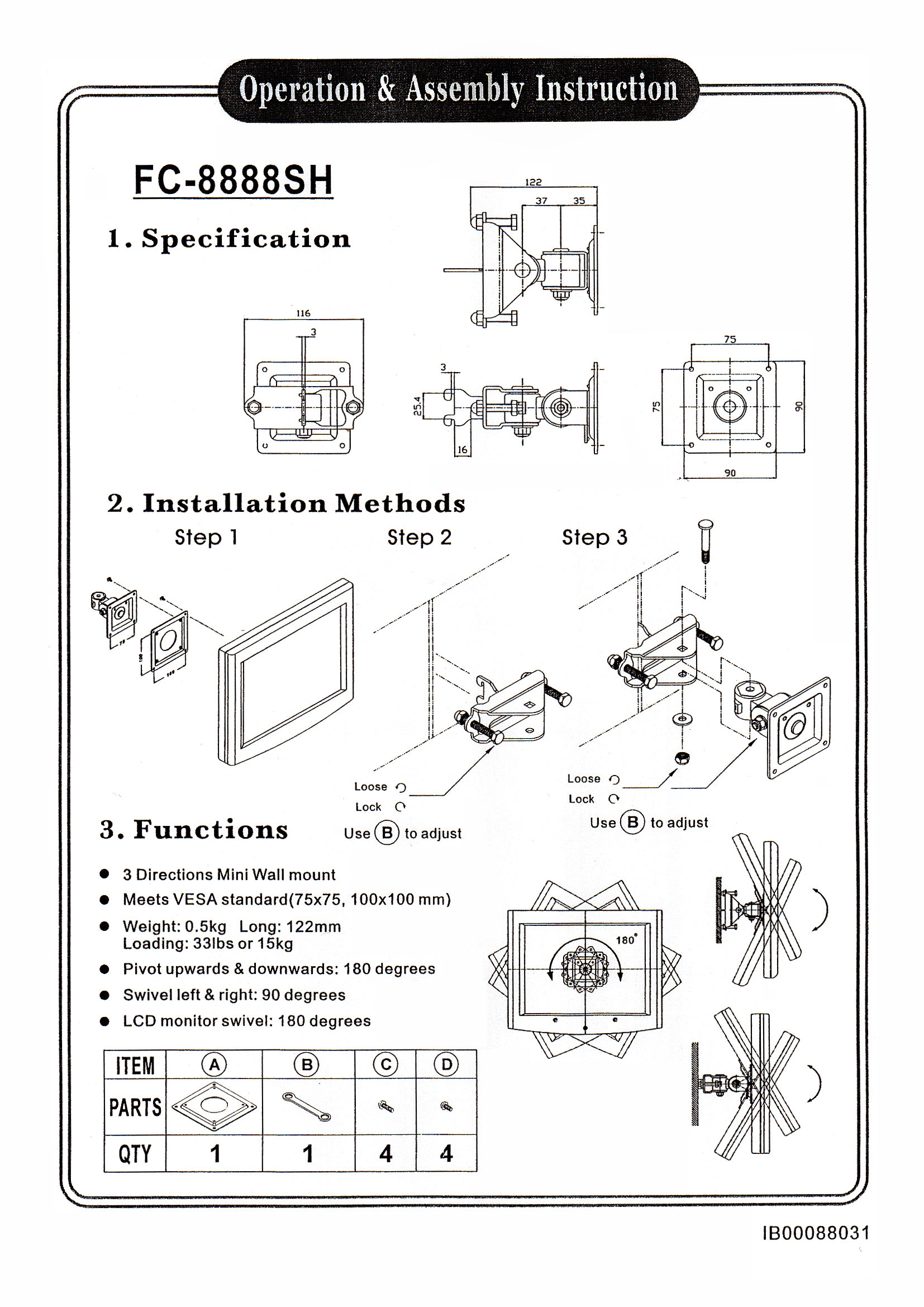
Vegetable Planning
Plant Matrix
Planting Schedule
Site Planning